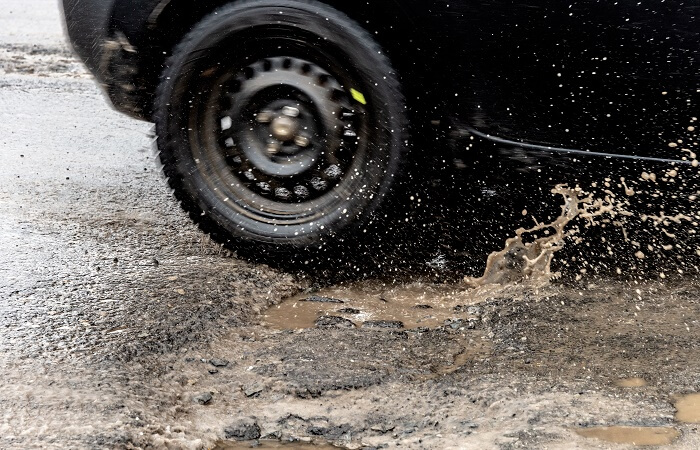Teach Your Teen to Spot Hazards during National Safety Month
June is a great time to review driving lessons that can apply all year long.
June is a great time to review driving lessons that can apply all year long.

June is National Safety Month and an excellent time for us all to take a look at how we measure the risks in our lives.
Car crashes are still the leading cause of death for teens, but you can help your new driver take steps to improve their odds and avoid injury. With the start of National Safety Month, the focus is on hazard recognition and how we can learn to really see the risks all around us.
It starts with asking a simple question: “What would happen if…?”
Expect the worst
One of the most important things for your new teen driver to learn is that just about everything can be a hazard on the road. Poor weather can limit visibility and cause you to lose tire traction. Passengers in the car can distract you. Even pot holes can create dangerous conditions. There’s no limit to what can put you at risk, which means you have to constantly be on alert.
This is where this question comes in handy. Since it can be overwhelming for teen drivers to consider the sheer number of hazards they’re dealing with, you can use this question to practice in less hazardous situations. Instead of driving with your teen in a snowstorm, go out on a clear day and ask them how they might drive differently if there was an inch of snow already on the roads.
Similarly, you can ask them what they’d do if the driver ahead of them swerved suddenly to avoid a pot hole or if a deer or other animal ran out in front of the car. By asking your teen these questions, you can teach him or her to understand and prepare for the many risks they may encounter behind the wheel.
Spot hazards
Ultimately, staying safe on the roads is about spotting potential hazards and taking action to avoid them. Most of the time, this is pretty, well, boring. But that’s a good thing! If your teen gets caught in a heavy downpour, their response could simply be to slow down and maybe even put on their flashing lights so other drivers can see them. It’s not about always avoiding a life-threatening hazard at the last minute, but rather about helping your teen spot hazards early on so they can make safe decisions to avoid a crash.
Ideally, this will also help prevent your teen from creating hazards of their own. When your teen understands the risks of a rainstorm, for example, they may think twice about using their cruise control feature in poor conditions.
This applies to distractions, as well. Your teen, the same as all drivers, will be tempted to use their phone behind the wheel. The goal is that, if you can teach your teen to view phone use behind the wheel as a hazard, they’ll stop short of that temptation and decide to wait and check their phone once they are safely parked.
Take part in National Safety Month
June is a great time to review this lesson but it applies all year long. You can get additional free safety materials during National Safety Month at nsc.org/nsm. See what you can learn and pass on these lessons to your teen, your co-workers and all your loved ones to help us all keep each other safe.
With a century-long legacy, the National Safety Council is a global center for safety expertise. Let's work together to align resources. We look forward to learning about ways we can join efforts to expand safety everywhere!
There are no items in your cart